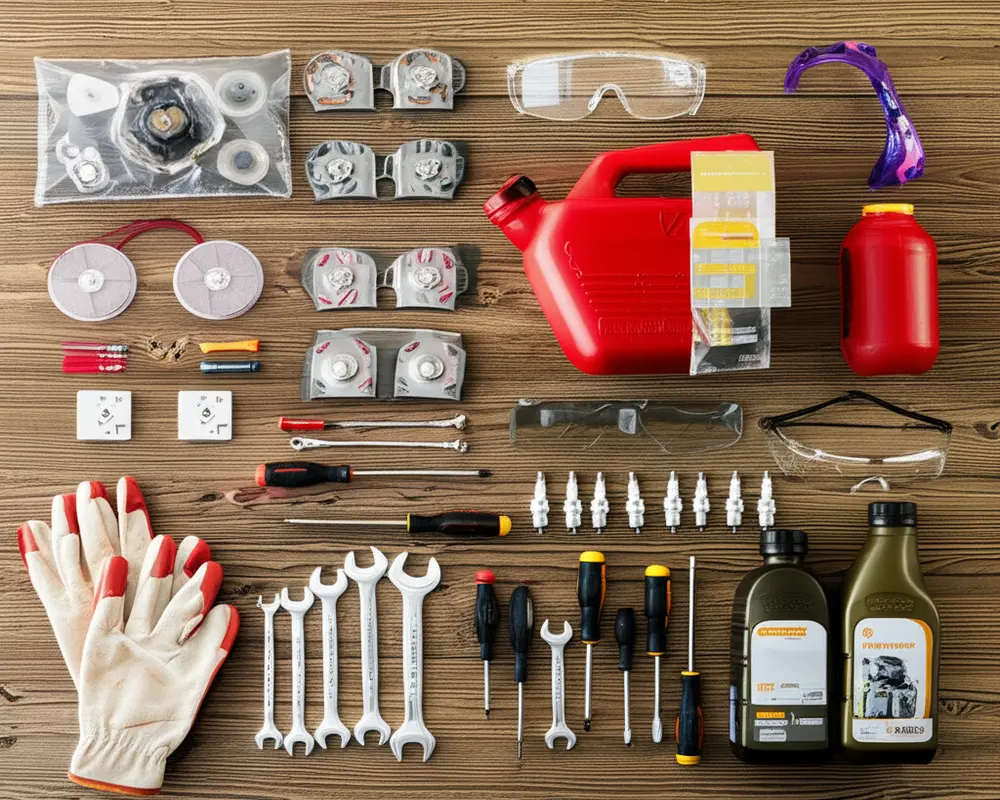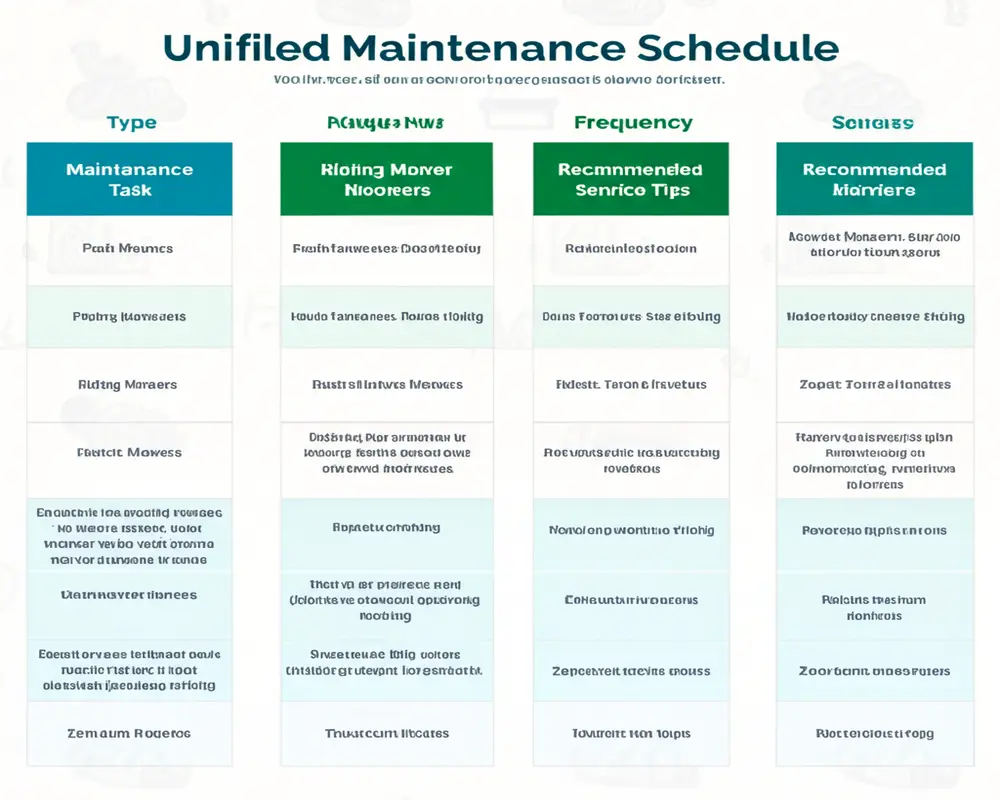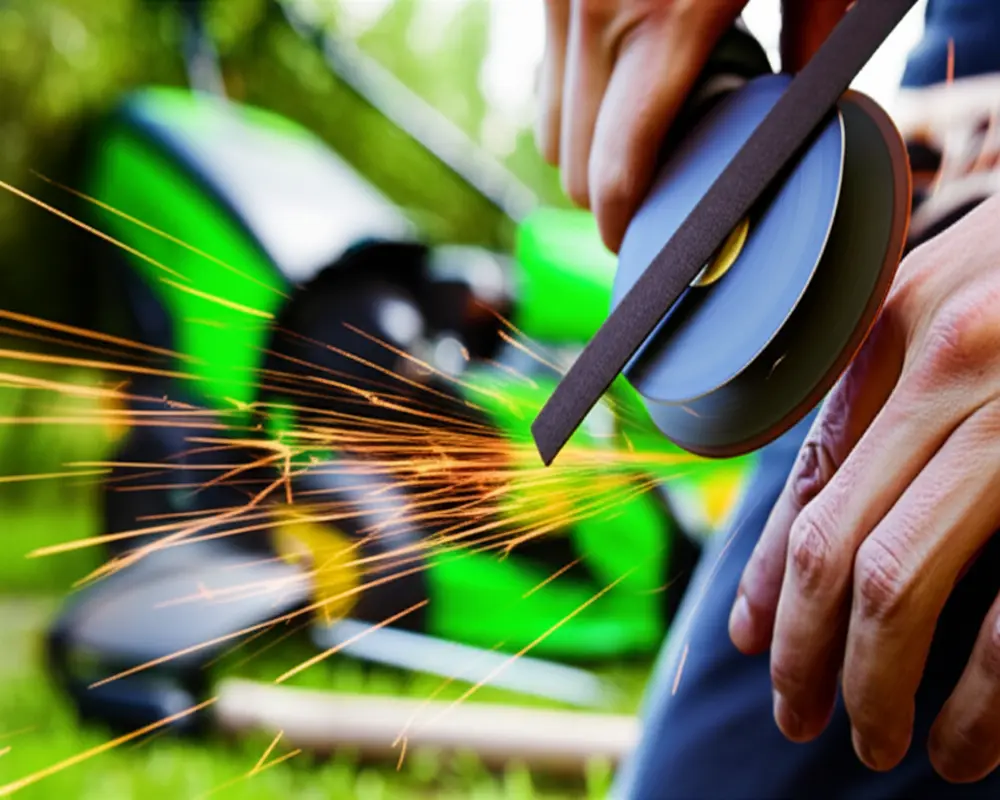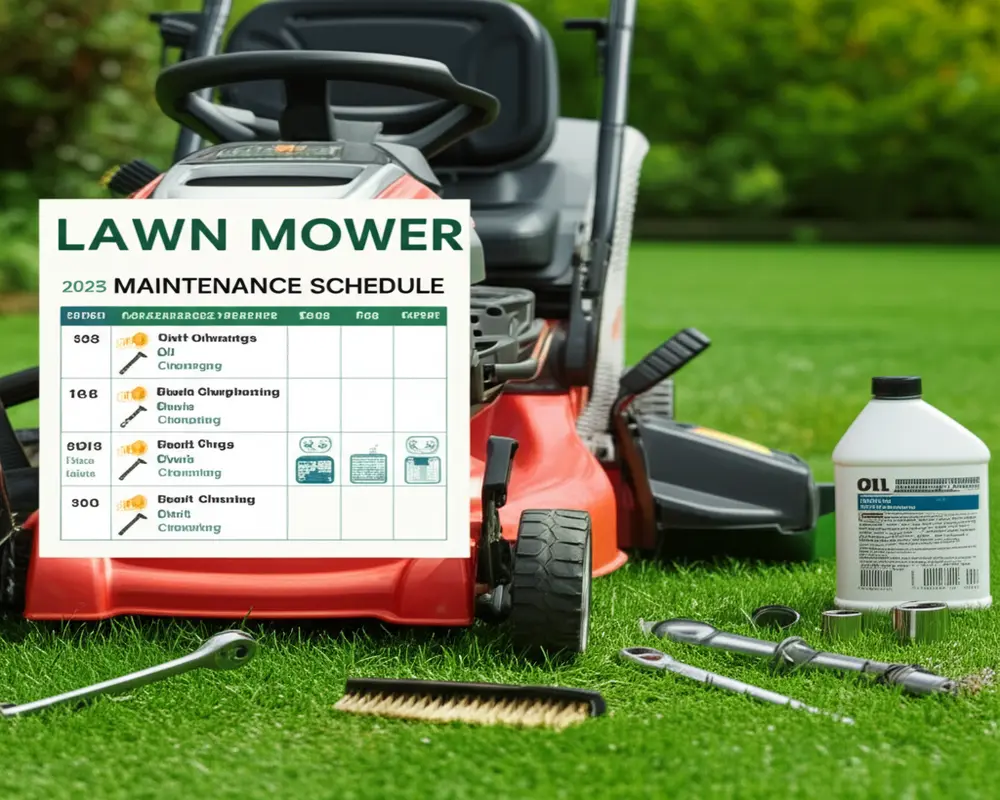Lawn Mower Maintenance Schedule: The Ultimate Guide for 2025
Maintaining a lawn mower may seem straightforward, but adhering to a proper lawn mower maintenance schedule is vital for ensuring your machine operates efficiently, lasts longer, and contributes to a healthier lawn. This comprehensive guide for 2025 draws on expert insights and trusted resources like Popular Mechanics and Bob Vila to deliver actionable maintenance tips, timelines, and environmental practices for every mower type.
1. Introduction: Why Regular Lawn Mower Maintenance Matters
Regular upkeep of your lawn mower achieves more than just reliable starts and smooth cuts. It extends the mower's lifespan by minimizing wear, ensures safety by preventing malfunctions, lowers costly repair expenses, and promotes a clean, uniform cut that benefits lawn health. Neglecting maintenance often results in engine failures, uneven cutting, and higher fuel consumption. Think of maintenance as an investment into your mower’s productivity and your lawn’s vitality.
2. Safety First: Essential Precautions Before You Start
Before beginning any maintenance task, safety must be the foremost priority. Always disconnect the spark plug or remove the battery in electric mowers to prevent accidental starts. Allow the engine to cool down to avoid burns. Use protective gloves and eye protection when handling sharp or dirty components. Perform maintenance in a well-ventilated area to avoid inhaling fumes and carefully handle fuels to avoid spills or fire hazards.
3. Essential Tools & Materials for Lawn Mower Maintenance
To maintain your mower effectively, equip yourself with the right tools and materials. The basics include a socket wrench set, a spark plug wrench, a wire brush for cleaning electrical parts, an oil drain pan for oil changes, sharpening tools for blades, and a blade balancer to ensure even cutting. Stock up on essential materials such as high-quality engine oil, fuel stabilizers to keep gasoline fresh, replacement air filters, new spark plugs, and cleaning supplies like brushes and rags.

4. Comprehensive Lawn Mower Maintenance Schedule (By Frequency & Type)
The frequency and type of maintenance depend heavily on the mower you own—gas, electric (corded or battery), riding/zero-turn, or robotic. Below is a unified maintenance table outlining key tasks categorized by how often they should be performed.
| Task | Gas Mower | Electric Mower (Corded/Battery) | Riding/Zero-Turn Mower | Robotic Mower | Frequency | Notes |
|---|---|---|---|---|---|---|
| Check oil level | Before each use | NA | Before each use | NA | Before Each Use | Essential for smooth engine operation |
| Clean mower deck | After each use | After each use | After each use | Weekly | After Each Use | Prevents grass buildup which reduces cutting efficiency |
| Sharpen blade | Every 25 hours | Every 50 hours | Every 25 hours | As needed | Every 25-50 Hours | Sharp blades ensure clean cuts and lawn health |
| Replace spark plug | Every 50 hours or annually | NA | Every 50 hours or annually | NA | Annually | Maintains reliable engine startup |
| Winterize (fuel draining, battery care) | Yes | Battery maintenance required | Yes | Yes | Annually | Prevents engine damage during off-season |

5. Detailed Breakdown of Key Maintenance Tasks
Checking and Changing Engine Oil
Precise oil management is fundamental, particularly for gas and riding mowers. Use manufacturer-recommended engine oil types and change the oil every 25-50 hours of operation or at least once annually. Always warm the engine before draining oil to improve flow. Dispose of used oil responsibly at certified collection centers, in compliance with EPA guidelines on used motor oil recycling.
Air Filter Cleaning/Replacement
Clean or replace air filters every 25 hours or sooner if working in dusty conditions. A clogged filter reduces engine efficiency and increases fuel consumption.
Spark Plug Inspection and Replacement
Inspect the spark plug for carbon buildup or damage every 50 hours of use. Replace it annually or whenever it shows signs of wear to ensure efficient engine starts and operation.
Sharpening and Balancing Mower Blade
Sharp blades create clean cuts, promoting lawn health and preventing disease. Use a sharpening stone or an appropriate grinder. After sharpening, balance the blade to prevent vibration damage to the mower. Follow detailed guidance on sharpening blades for optimal results.

Cleaning Mower Deck and Undercarriage
Remove grass clippings and debris after every cutting session to prevent corrosion and maintain cutting efficiency. Use a brush or scraper to clean the deck edges and the area beneath the mower.
Fuel System Care for Gas Mowers
Use fresh gasoline mixed with fuel stabilizers when storage is anticipated, like over winter months. Check fuel lines and filters annually for cracks or blockages.
Inspecting Belts, Cables, and Pulleys
These components wear over time, causing power loss or control failures. Inspect them every 50 hours or during seasonal tune-ups, replacing any frayed or cracked items.
Tire and Wheel Maintenance on Riding Mowers
Check tire pressure and tread wear before each use. Lubricate wheel bearings and replace worn tires annually to maintain smooth operation.
Battery Maintenance for Electric and Riding Mowers
For battery-powered mowers, regularly check charge levels, clean terminals, and store batteries in cool, dry places. Replace batteries past their effective lifespan for optimal performance.
Exterior and Engine Housing Cleaning
Periodic cleaning of the mower’s exterior and engine housing prevents rust buildup and overheating. Use mild detergents and avoid high-pressure washing to protect electrical parts.
6. Seasonal Maintenance Checklists
Spring Start-up
After winter storage, inspect the mower thoroughly. Change the oil, replace the air filter, sharpen blades, and check all belts and cables. Verify fuel quality and battery charge before the first cut of the season.
Mid-Season Tune-up
Carry out routine inspections every few weeks: clean the deck, check blade sharpness, and replace or clean spark plugs and air filters as needed.
Fall/Winterization
Prepare your mower for storage by draining fuel or adding stabilizer, removing the battery for separate storage, and performing deep cleaning. Store in a dry, sheltered space to prevent rust and damage.
7. Common Maintenance Mistakes to Avoid
Skipping tasks, like blade sharpening or oil changes, leads to inefficient cutting and engine wear. Using wrong oils or poor-quality fuels can cause engine damage. Neglecting blade balance results in vibrations harming mower components. Storing mowers with old fuel causes carburetor clogs, and ignoring warning signs often exacerbates small problems into costly repairs.
8. Basic Troubleshooting: When Maintenance Prevents Problems
Many common mower issues trace back to neglected maintenance:
- Mower won’t start: Often linked to clogged spark plugs or stale fuel.
- Loss of power: Can be caused by dirty air filters or dull blades.
- Uneven cut: Usually due to unbalanced or damaged blades.
- Excessive smoke: Indicates wrong oil level or poor-quality fuel.
- Unusual noises: May signal loose belts or worn components.
9. Environmental Considerations for Mower Maintenance
Disposing of used oil, fuel, and parts in an environmentally safe manner protects local ecosystems. Utilize designated recycling centers for oils and batteries. Favor eco-friendly cleaning products that avoid harsh chemicals. Proper maintenance extends equipment life, reducing waste and environmental footprint.
10. Printable Lawn Mower Maintenance Checklist
To keep your maintenance organized, consider downloading our printable maintenance checklist to track tasks by frequency and mower type.
11. Frequently Asked Questions (FAQs)
- How often should I change my mower oil?
- For gas mowers, change oil every 25-50 hours of use or once a year, whichever comes first.
- Can I use car oil in my lawn mower?
- It's best to use oil specifically recommended by the mower manufacturer, often SAE 30 or synthetic oils designed for small engines, rather than typical car oils.
- What are the signs that the blade needs sharpening?
- Look for uneven cuts, shredded grass, increased mowing time, or visible nicks on the blade edges.
- What fuel types are best for gas mowers?
- Use fresh, unleaded gasoline with an octane rating of 87 or higher. Avoid gasoline with over 10% ethanol.
- Is using fuel stabilizer necessary?
- Fuel stabilizers are recommended when fuel will be stored over 30 days to prevent degradation and carburetor issues.
12. Conclusion: Invest in Your Lawn Mower, Invest in Your Lawn
By following this detailed lawn mower maintenance schedule, you not only protect your investment but also ensure consistent, healthy lawn appearance. Regular care, safety awareness, and environmental responsibility will keep your mower running smoothly for years. Whether you're a homeowner or landscaping professional, dedicating time to maintenance pays dividends in performance and longevity. Start your 2025 maintenance routine today and enjoy worry-free mowing all season long.
For more detailed tips on garden tool care and maintenance, browse our guides on garden spade rust prevention and digging spade technique to complement your garden equipment upkeep knowledge.

